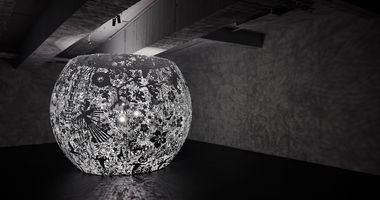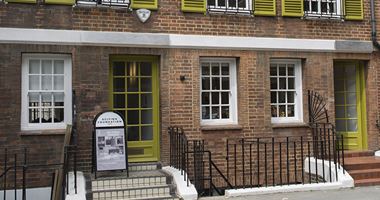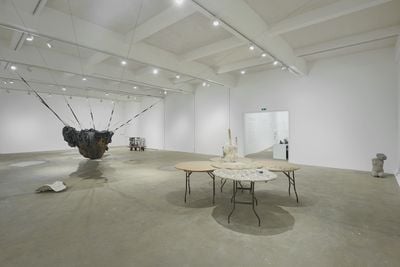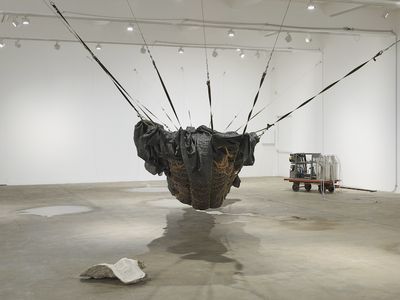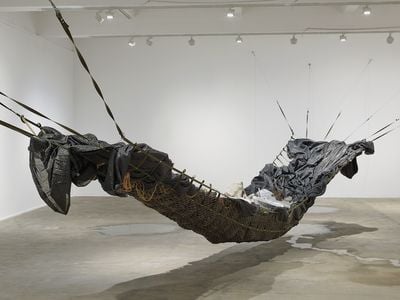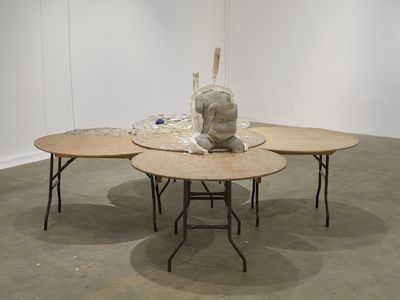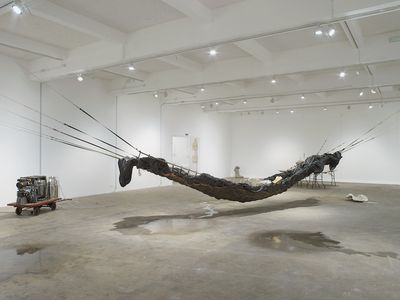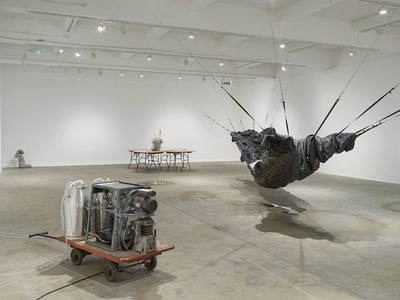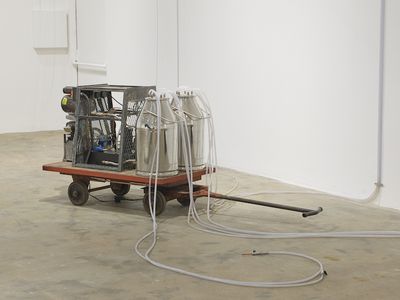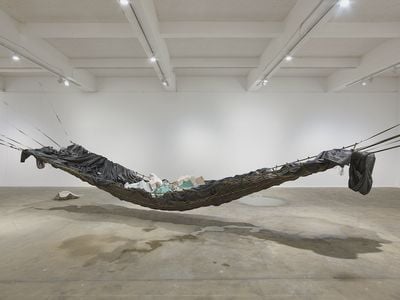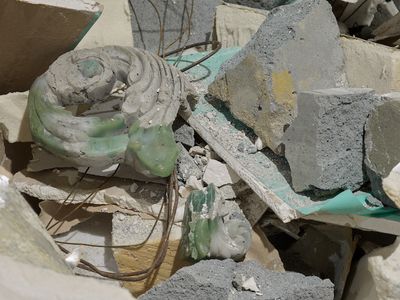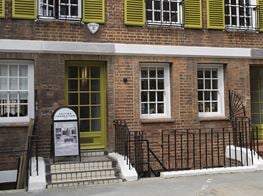Yu Ji: Learning on Location
In Partnership with Chisenhale Gallery
Yu Ji. Courtesy the artist. Photo: Lam Deng.
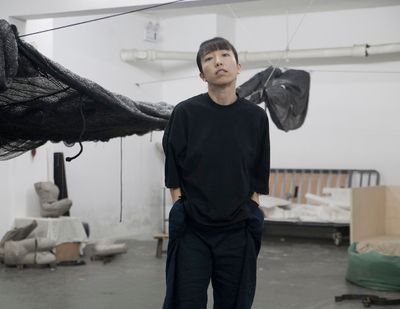
Yu Ji. Courtesy the artist. Photo: Lam Deng.
Shanghai and Vienna-based artist Yu Ji guides viewers through the complexity of the world through sculpture, which extends to performance and includes materials such as cement, fire, wood, stone, and discarded objects culled from daily life.
Her works respond directly to the surrounding environments in which they are exhibited, taking form from urban and natural sites to generate geographical as well as personal narratives. Appearing as though they are in the process of becoming, her subtle, fragmentary installations are informed by her learned responses to certain locations.
The artist's exhibition Diary of Sulfur Mining – Pataauw at Mind Set Art Center in Taipei (7–24 January 2016), for instance, was developed from field research into the sulfur mines in Liouhuang Valley in Beitou, Taiwan. Describing the landscape as 'simultaneously visually, olfactorily and tactilely invasive and aggressive', the resulting artworks convey a lightness of touch despite the challenging conditions of their genesis.
In Pataaw Stone (2016), the exhibition's central work, video documentation sees the artist dragging a stone sculpture up the mountain in search of the mysterious Qixing Pond, protected by locals from tourism, which she found dried up, 'covered in tender grass', before placing the stone at the pond's centre.
Having graduated from the Department of Sculpture of the College of Art of Shanghai University in 2011, Yu Ji began her 'Flesh in Stone' series in 2012, creating cast-concrete sculptures of fragmentary body parts—torsos, legs, and arms—derived from observations of models in her studio, and later artefacts and sculptures from China and Cambodia.
The sculptures often appear in Yu Ji's exhibitions, providing connection points with other parts of her practice. Most recently, a series of 'Flesh in Stone' sculptures were presented at Chisenhale Gallery in London for the artist's exhibition Wasted Mud (22 May–18 July 2021). Following a three-month research residency at Delfina Foundation, the artist developed the project from her personal experience familiarising with the city.
Drawn to the tidal movement of the Thames, and its flow into London's canal network, Yu Ji felt her way in the city through its waterways, focusing on those nearest to Chisenhale Gallery. The resulting installation—made up of four separate pieces—is brought alive by a machine that pumps water from two milk churns, which has been mixed with weeds from the area.
Pools of water on the floor, mist in the air, and shadows cast across the space combine with works including a hammock (Jaded Ribs, 2021) of three layers of netting and black tarp that is regularly encountered in construction sites across China. Connecting different localities in Shanghai and London, the exhibition is a meditation on different temporal registers and places.
In this conversation, which was originally held online on 11 June, Yu Ji joins artist, curator, and critic Jo-ey Tang to discuss the exhibition, radiating outwards and back in time to all of her work.
JTYu Ji, I'm curious about the sensations that you set forth in the exhibition. What led you in the research process?
YJI began without a specific idea in mind. The concept for Wasted Mud arose slowly, through my exploring of London. I learnt about London's waterways, and the daily lives of inhabitants in different parts of the city, especially where Chisenhale Gallery is located.
I try to make a space for people to reflect on their experiences and memories in certain places, and to activate these two aspects when they walk into the space and see the works.
It's a part of London that has a lot of canals going through it. I walked around every day alongside the river and canals. After a couple of days of walking, the idea began to find its way.
What I find interesting about the Thames are its ever-changing tides. I caught the low tide of the Thames and visited the riverbed at different sites along the river. That experience made a strong impression on me. To observe how the river flows in the city, and the riverbed appearing with the changing of the moon. There is also a river in my hometown of Shanghai, the Huangpu River, but it's not the same thing.
The Thames flows into smaller canals, which are connected to each other and extend into the deep east of London, where I explored the growing of weeds in the built environment. I brought the weeds and other found materials, such as debris from buildings, into Chisenhale Gallery to build a kind of landscape.
JTThere are many layers to the installation. One work in particular, Jaded Ribs (2021), consists of layers of materials; this massive work seems to be catching debris, cradling the space of the gallery. Can you tell us a bit about the different layers in this work?
YJA new process for me, and the challenging part of this exhibition, was that only half of the work was made in my studio in Shanghai, and completed in the gallery. I was planning to go back to London and finish the pieces by myself, but because of Covid-19, I couldn't make the trip. The technical team of Chisenhale Gallery helped to bring it to the finish line.
Jaded Ribs has two parts. The hammock was knitted in Shanghai by a collaborator of mine who is in his seventies, who has made a lot of metal works over the years. He was a farmer, with the knowledge of making things by hand.
For this work, I invited him to knit a net, using three different kinds of strings and ropes. The first layer is a green net made from military rope. The second layer is a net made out of golden fishing string. The third layer is a black netting made from a material used to cover up façades of buildings under construction in China. You can find this material everywhere on the street in China, to cover the architecture, or the ground to hold in dust and construction waste.
JTThe translation process, in observing the bodies that helped you put this installation together via Zoom, reminds me of the way you observed bodies in your studio in the 'Flesh in Stone' series. The limitations of materials and of bodies are central to the way you work.
YJYes. I remember we discussed how I made these figures in my studio many years ago.
JTThe machine in Foraged (2021) is the shiniest object you've ever made. Two milk canisters are juxtaposed with an old machine on a trolley. Can you tell us more about this work?
YJThis is quite a special piece; it's the first time I've used a machine as part of my work. It is a working system that produces a liquid that travels from the ground to the ceiling and back to the ground.
I collaborated with a metal studio in London to produce this machine. It consists of a big pump that boils water and weeds in two milk churns. So, it's making a kind of tea or juice in the space. I also wanted to have a pumping sound in the exhibition, as something that continues to move in time, as a performative element.
This machine controls the atmosphere of the exhibition. In the damp and chilled space of Chisenhale in early spring, the machine was working to heat up the space.
JTAnd the weeds are from the surroundings of Chisenhale Gallery?
YJYes, the team helped me pick these plants, which are regularly changed. They come from the park or areas near the canals.
JTWhen you were talking about Jaded Ribs, you were discussing how the weeds would grow through the material that covers the ground of construction sites in Shanghai.
There's a circularity between all these works. I think about the word 'provision', which relates to food and things that we put into our bodies. Your work is very provisional, as in improvisational. You create things that sometimes look like they're half-finished, or in a state of becoming, but you've stopped at the limits of recognition.
YJThanks for saying so, and going back to what you mentioned about the circularity of materials and how they mix with each other in the works—I think this is something I'm developing or testing in my practice. I'm trying to make works that can keep growing, and that can move beyond the studio.
I'm trying to make works that can keep growing, and that can move beyond the studio.
From the moment I got the invitation from Chisenhale, I wanted to try something new and make a site-specific project with strong connections to the location and its surroundings, to mix in all of my experiences from different cities through found objects and materials, and, of course, to create objects. I try to make a space for people to reflect on their experiences and memories in certain places, and to activate these two aspects when they walk into the space and see the works.
JTThe circularity is also reflected in the concrete sculpture of Flesh in Stone-Ghost No.8 (2021), still attached to half of its mould, with the other half of the mould sitting on the ground as part of another work, Jaded Ribs.
YJFlesh in Stone-Ghost No.8 (2021) is a new piece especially made for this project. There is a concrete torso sitting in the middle of this big table, which is one of five second-hand tables that were found in flea markets in London.
On the tables there are also rocks from the riverbed of the Thames embedded in concrete. On it, a piece of melted blue wax is from my personal collection of objects found in the urban ruins of a residential area in the city centre of Shanghai, where people had moved out and abandoned their belongings.
JTAll these things coexist and coalesce as a kind of sensory and temporal mapping, reflecting human and natural times.
YJI love to pick up these little pieces and put them in my studio. If you look at my other older sculptures, you see that they keep showing up.
JTThere is a cut in one of the tables, where one leg of the concrete torso sits, that looks as if the body is going through it, but it doesn't come out on the other side. It gives the sense of another dimension beyond. I don't know if this is a good time to mention, but while you were in London, you had your baby boy with you. In this sculpture, it's as if one body is coming out of another through the belly—a parallel to that time of making.
YJYes. That was a very special period of my life, as well as a very difficult time for me.
JTIn Flesh in Stone-Rema Rema 2001 (2020), one body is carrying another; there is an emphasis on the body and not the head, like body over mind, perhaps.
YJAfter I made about ten pieces of this torso, I started wanting to go further, to make it more complicated.
JTAt the beginning, you were observing models in your studio, but then did you stop doing that and in turn observe the sculptures you made to continue the process?
YJI still work with models, actually. But it's true that in recent works, I had the chance to change the shape of the body, and I remoulded them to make the movement of these torsos more complicated. For example, Flesh in Stone – Ghost No. 2 (2018) combines two materials. The part behind the concrete was made from plaster, so this is all new.
JTWhen we worked together for the exhibition at Palais de Tokyo (Inside China – L'intérieur du Géant, 19 October 2014–10 January 2015), you very meticulously made small plaster cubes, which you placed and then removed from the floor, leaving traces of the plaster as a kind of invisible sculpture.
YJNot many people know about this piece, Silence Practice (2014), because after the opening, they just disappeared. It was like dust on the floor. But I think it demonstrates an important recycling system in my works.
Through the performance, the work transformed into another work, which was then transformed into something else. These concepts become very present in my long-term practice.
JTYou brought the cubes back to Shanghai for another iteration of the exhibition, at chi K11 Art Museum, where you made a suspended piece, titled Smudgy 1502 (2015). I think that it's quite interesting, too, to have the performance only visible to those who are installing the exhibition, in thinking about the boundaries of where the public and the private lie.
YJThanks for saying that. At the beginning, well, honestly, I felt nervous to perform in front of people. And then, step by step, I tried more to transform the process, making these sculptures into a kind of performance.
JTI remember when we brought the plaster in Paris, it was so different from what you had used in Shanghai. It took longer to dry.
YJYes, materials are different everywhere.
JTThere's another important but less discussed aspect to your work that maybe we can conclude with, which is your performance work on videos. You're either moving between slight movements, or making sculptures and sculptural environments, as in Pataauw Stone (2015).
YJYes. This is the series of video works called Unseen Gesture, where I move very slowly as a kind of invisible performance in front of the camera.



